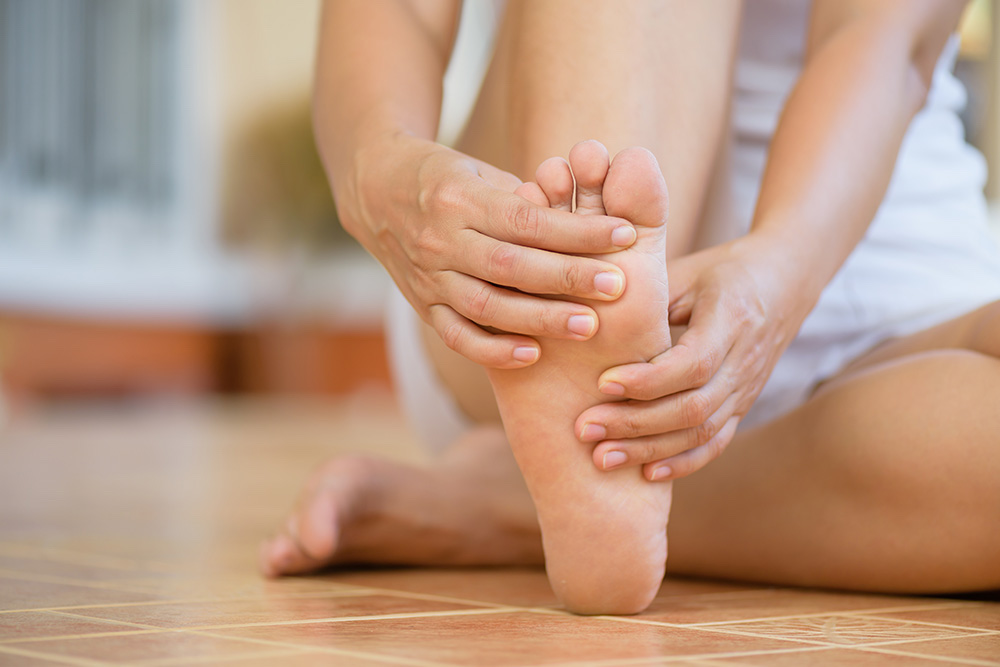How To Manage Plantar Fasciitis

It often starts as a minor irritation. But if left untreated, it can develop into a sidelining injury: plantar fasciitis.
Plantar fasciitis, a common heel pain among active adults1, is when the thick band of tissue that runs lengthwise across the bottom of your foot, while connecting your heel to your toes (plantar fascia), becomes inflamed. Usually, there’s sharp, stabbing pain at the bottom of your foot, hurting mostly in the mornings.2
Plantar fasciitis is common among runners, those who are overweight or people who wear unsupportive footwear.3
What Are Plantar Fasciitis Symptoms
- Sharp, stabbing pain in the bottom of the foot
- More pain in the morning
- Pain is worse after exercise, not during3
How to Manage Plantar Fasciitis?
Ignoring plantar fasciitis can cause chronic heel pain that hinders your regular activities. Once you notice pain, seek medical attention for appropriate diagnosis and treatment. It can take up to 18 months to treat plantar fasciitis.1
Wear Appropriate Footwear
To help reduce the risk of plantar fasciitis, choose a shoe that has good support and fits your foot. Not all shoes will fit properly, so make sure they do. In addition, you can get inserts or orthotics to help alleviate pain associated with or help prevent plantar fasciitis.
Modify Activity
Any activity that involves repetitive impact, like running, should be avoided during treatment. It’s OK to participate in low-impact, non-weight-bearing activities such as cycling, swimming, and rowing to maintain your cardiovascular health. When approved, a gradual return to activity may be allowed — depending on if there is tenderness or not.1
Ice Massage
An ice massage can help reduce plantar fasciitis pain. One trick is to take a frozen water bottle and roll it under the foot for 5 to 10 minutes a day. 1, 2
Do Plantar Fascia-Specific Foot Stretches
Inexpensive and easy to learn, foot and calf stretches can help alleviate plantar fasciitis pain.
One stretch, the plantar fascia-specific stretch, can help ease pain and is easy to do. Simply, flex the toes with one hand and hold for 30 seconds.
Repeat at least three times in each session. Do this at least one time a day, especially in the morning before taking your first step. You can do this stretch before standing after a prolonged period of sitting.1
For specific exercises to help ease pain, speak with a medical professional.
Shop for supportive shoes to help manage plantar fasciitis.
The contents of this blog were independently prepared, and are for informational purposes only. The opinions expressed herein are those of the author and are not necessarily indicative of the views of any other party. Individual results may vary depending on a variety of patient-specific attributes and related factors.
Sources:






